Why Product Label Efficiency Matters
In today’s fast-paced marketplace, where consumers have more choices than ever, your product’s label often serves as the first point of interaction between your brand and a potential customer. But beyond the visual appeal, your labeling process can either drive your business forward or cause costly inefficiencies.
Many businesses unknowingly lose time and money by overlooking critical metrics and key performance indicators (KPIs) that could streamline their labeling operations. Poorly managed processes lead to delays, errors, and compliance issues—all of which directly impact your business goals and bottom line. That’s why evaluating your product label process for optimal performance is critical to maintaining efficiency, saving costs, and ensuring your products make it to the shelves on time with the correct labels.
Are you paying attention to the right product metrics over a meaningful time period? Let’s explore the key factors every brand should monitor to maximize the efficiency of their labeling process.
The Role of Product Labeling in Operational Success
Product labeling is more than just a pretty design. Your product label isn’t just a piece of printed material—it plays a strategic role in your business operations. A label’s impact extends far beyond the visual presentation. It’s an essential tool for:
- Brand communication: Your label is often your best chance to communicate your product’s value proposition to the consumer and to help them make informed decisions.
- Compliance: Regulatory requirements demand accurate and up-to-date labels to avoid penalties or product recalls.
- Supply chain management: A smooth labeling process keeps production lines moving and ensures timely delivery to market.
Yet, many businesses struggle with these challenges:
- Managing multiple SKUs: A wide product range often leads to complexity in managing label variations.
- Frequent design changes: Whether for marketing reasons or regulatory updates, labels must frequently be updated.
- Balancing speed, quality, and cost: These three elements must be managed carefully to avoid production delays or costly overruns.
By tracking specific metrics, you can address these challenges head-on and optimize your labeling processes.
Key Metrics for Evaluating Product Label Efficiency
When it comes to product labels, knowing how well they work is important. Key business metrics help us understand their impact. They show us if labels grab attention, provide useful information, and drive sales. Let’s explore the main metrics I think matter most when evaluating product label efficiency.
Turnaround Time
Why It Matters: In a competitive marketplace, speed is often a differentiator. Whether launching a new product or responding to changes in consumer demand, the ability to produce correct labels quickly without sacrificing quality can make or break a product launch.
Turnaround time also affects supply chain efficiency—slow label production can lead to delays that impact your entire operation. Monitoring this key performance indicator helps you stay aligned with your business goals while delivering value to your target audience.
How to Measure: Calculate the time taken from the moment a label design is approved to the completion of label printing. This metric provides insight into how quickly your labeling process can move.
Improving the Metric:
- Streamline approval processes: Reduce back-and-forth by setting clear expectations for label designs and feedback.
- Partner with proactive suppliers: Work with vendors who prioritize quick turnarounds and provide flexible production schedules.
- Leverage technology: Digital proofs and collaborative platforms can speed up design reviews and approvals.
Error Rate
Why It Matters: Labeling errors can lead to regulatory issues, damaged brand reputation, or even increased churn rate as customers lose trust. From regulatory non-compliance to incorrect branding, errors can result in costly recalls or fines. Furthermore, errors that make it to retail shelves can confuse customers and erode trust in your brand. Measuring this crucial metric can help you maintain quality standards and strengthen your competitive advantage by ensuring your labels are always accurate and compliant.
How to Measure: Track the number of errors detected per production cycle. Categorize errors by type (e.g., design, printing, regulatory) to identify recurring issues.
Improving the Metric:
- Implement quality control checks: Introduce multiple checkpoints during the design and printing phases to catch errors early.
- Utilize digital tools: Tools like digital proofs, mockups, and barcode verifiers can reduce human error and ensure label accuracy.
- Collaborate with experienced partners: Working with vendors who understand your compliance needs and brand standards can dramatically reduce error rates.
Cost per Label
Why It Matters: Every cent you save on labeling can be reinvested into other areas of the business. High labeling costs not only reduce profit margins but may also inflate product prices, which can harm your competitiveness in the marketplace. Monitoring this KPI over a specific period of time helps you stay aligned with your business goals while reducing unnecessary expenses.
How to Measure: Divide the total cost of labeling, including materials, design, and production, by the number of units produced. This provides a clear understanding of the per-unit cost of labeling.
Improving the Metric:
- Optimize material usage: Consider using alternative substrates or ink options that provide quality at a lower cost.
- Bulk purchasing: Work with suppliers to secure discounts for bulk orders, which can drive down costs.
- Evaluate your design process: Streamline revisions and design choices to reduce costly back-and-forth.
Labeling Compliance Rate
Why It Matters: Regulatory compliance is not optional—failure to adhere to local, state, or federal regulations can result in fines, delays, and missed opportunities with your target audience. Whether it’s the FDA requirements for food labels or environmental regulations for packaging materials, ensuring compliance should be a top priority.
How to Measure: Track how often compliance issues arise during the labeling process and calculate the time and cost required to correct non-compliant labels.
Improving the Metric:
- Stay up to date on regulations: Ensure your team is informed about the latest changes in labeling laws.
- Automate compliance checks: Use labeling software that automatically checks for regulatory adherence to minimize human error.
Artwork Revision Frequency
Why It Matters: Frequent revisions slow down the approval process and increase both design and production costs. High revision rates often indicate miscommunication between teams or an unclear design process.
How to Measure: Count the number of revisions each label design goes through before receiving final approval.
Improving the Metric:
- Foster clear communication: Ensure all stakeholders have the same understanding of the design requirements.
- Use digital collaboration tools: Platforms that allow real-time edits and annotations can minimize confusion and reduce the number of required revisions.
Using Data-Driven Insights to Enhance Labeling Efficiency
Data is king, and making data-driven decisions can quickly boost labeling efficiency. Collecting and analyzing data on the key metrics discussed above can give your business the edge it needs to stay efficient. By leveraging technology, you can automate the collection of data and generate real-time insights into your labeling process. This allows you to make informed decisions and proactively address inefficiencies.
Key performance indicators like turnaround time, error rate, and churn rate should be tracked consistently over a defined period of time to reveal patterns in inefficiency and opportunities for optimization.
Predictive analytics also plays a role in enhancing labeling efficiency. By forecasting demand peaks, changes in regulatory standards, or shifts in consumer preferences, businesses can adjust their label production processes well in advance, avoiding costly last-minute changes.
The Long-Term Impact of Labeling Efficiency
The benefits of improving your product labeling process extend beyond short-term gains. Efficient labeling systems lead to:
- Cost savings: Reduced errors, faster turnarounds, and lower per-label costs contribute to a healthier bottom line.
- Operational flexibility: As your business scales, a streamlined labeling process allows you to manage larger volumes without sacrificing quality or speed.
- Enhanced brand reputation: Consistent, high-quality labeling boosts consumer trust. builds a loyal customer base and strengthens your brand’s position in the market.
Final Thoughts: Take Control of Your Labeling Process
Evaluating and optimizing your product label process is not a one-time task but an ongoing effort. By monitoring key metrics like turnaround time, error rate, cost per label, compliance rate, and artwork revision frequency, you can drive efficiency and reduce costs. A proactive approach to labeling will help your business remain agile, competitive, and ready for growth.
I encourage you to evaluate your current labeling process. Are you achieving the efficiency you need? Are your labels accurate? If not, it might be time for a change. If you’re ready to take control of your labeling process and want expert guidance, reach out to us today. With decades of experience, we provide tailored solutions that ensure your labels are efficient, compliant, and visually distinctive.


